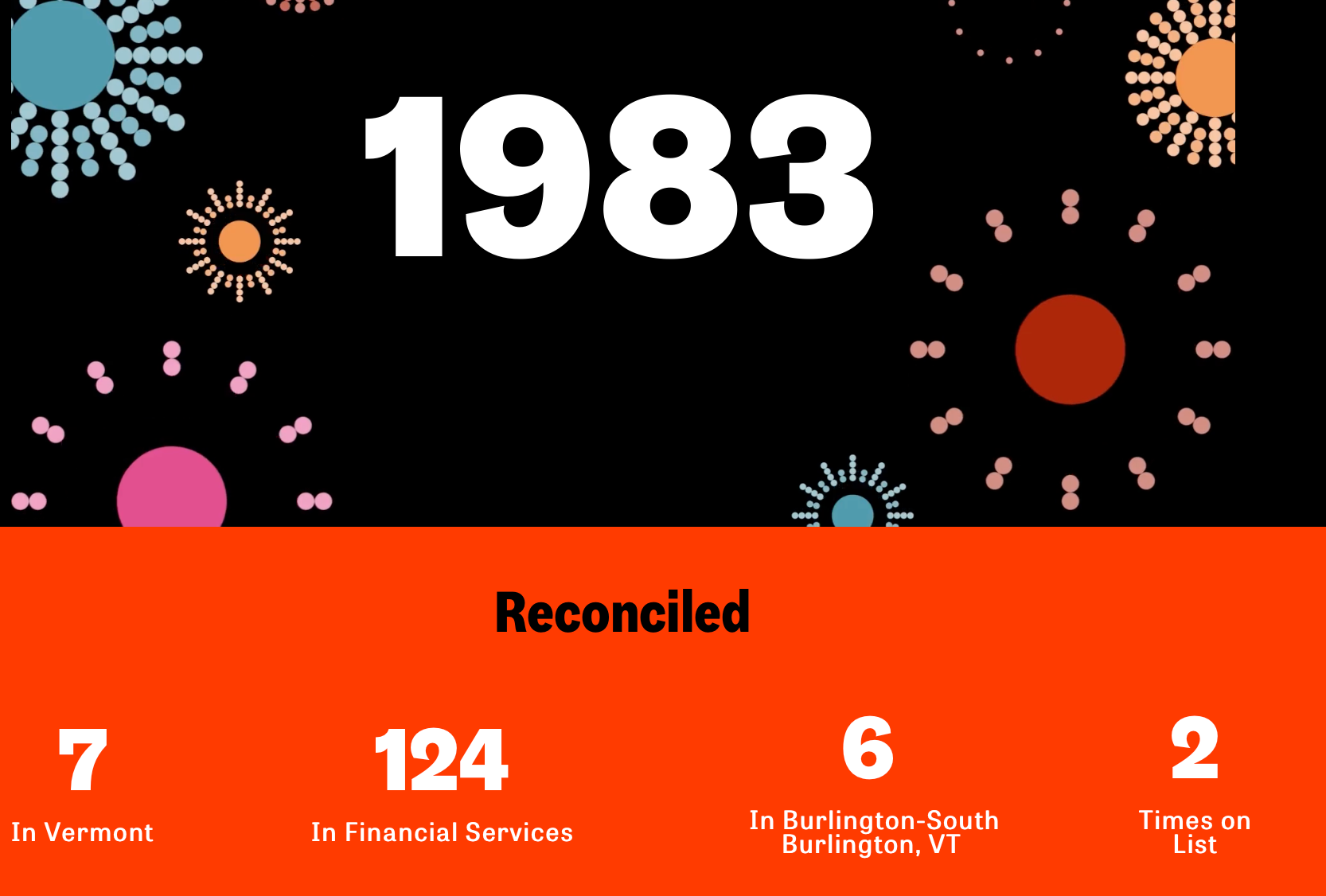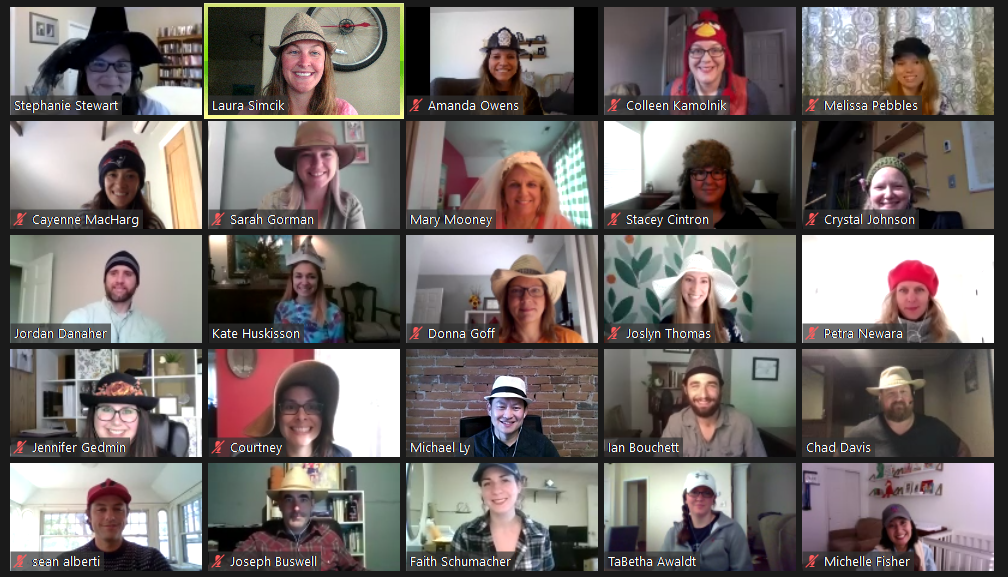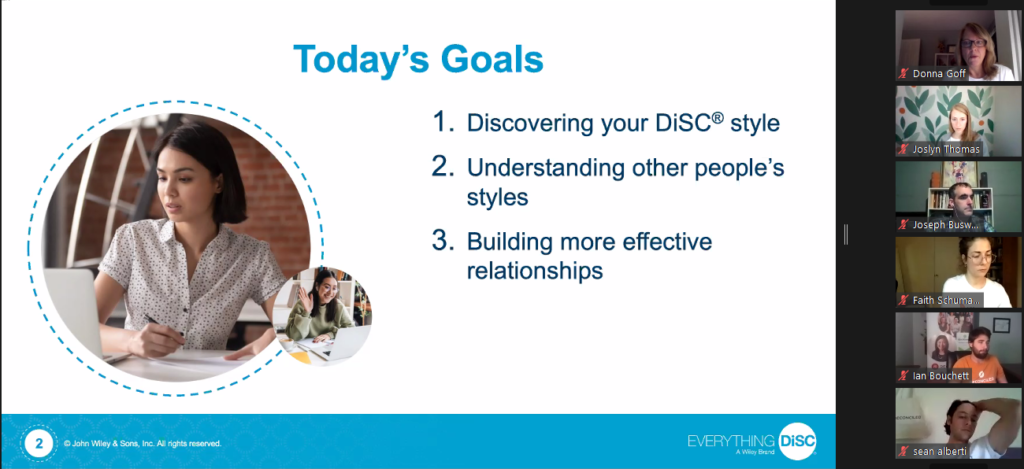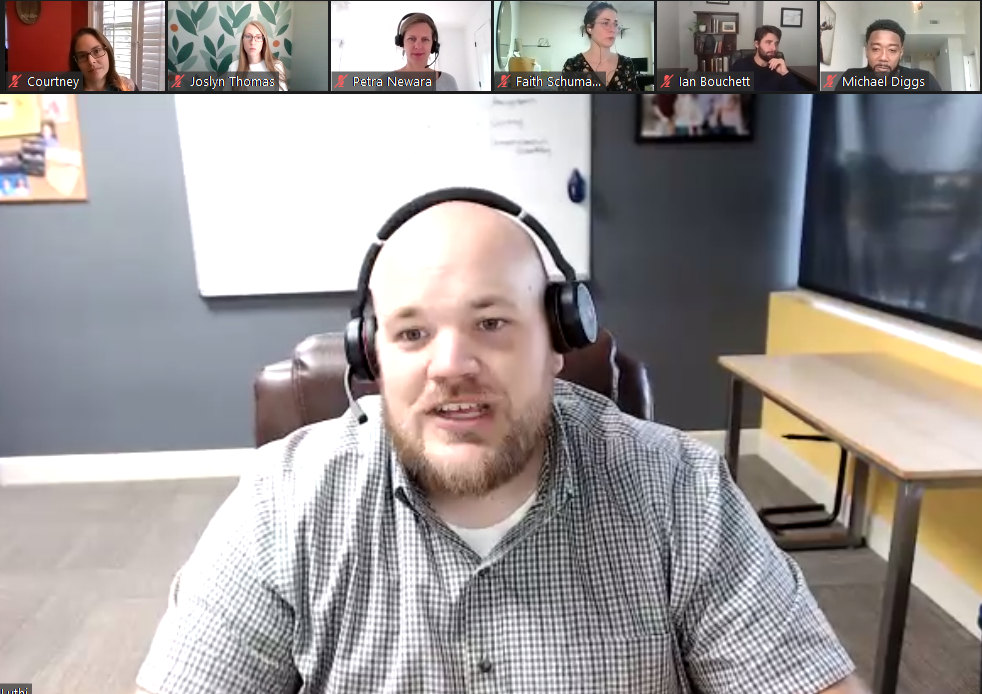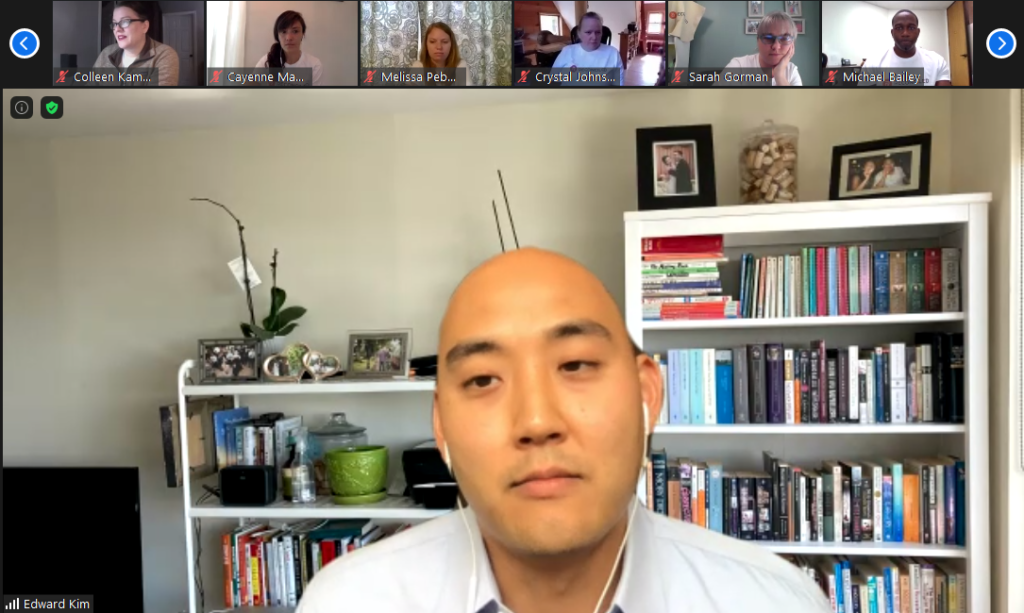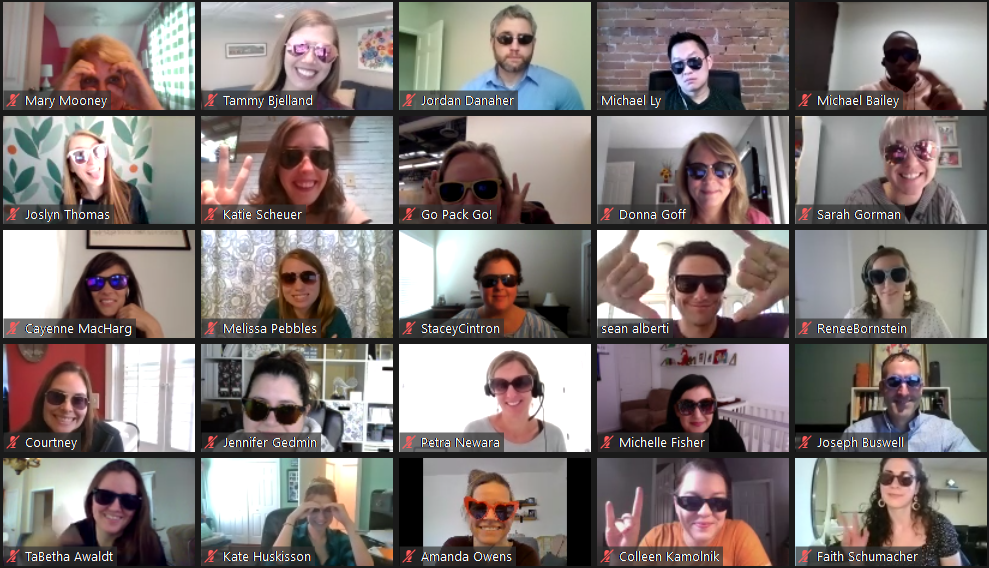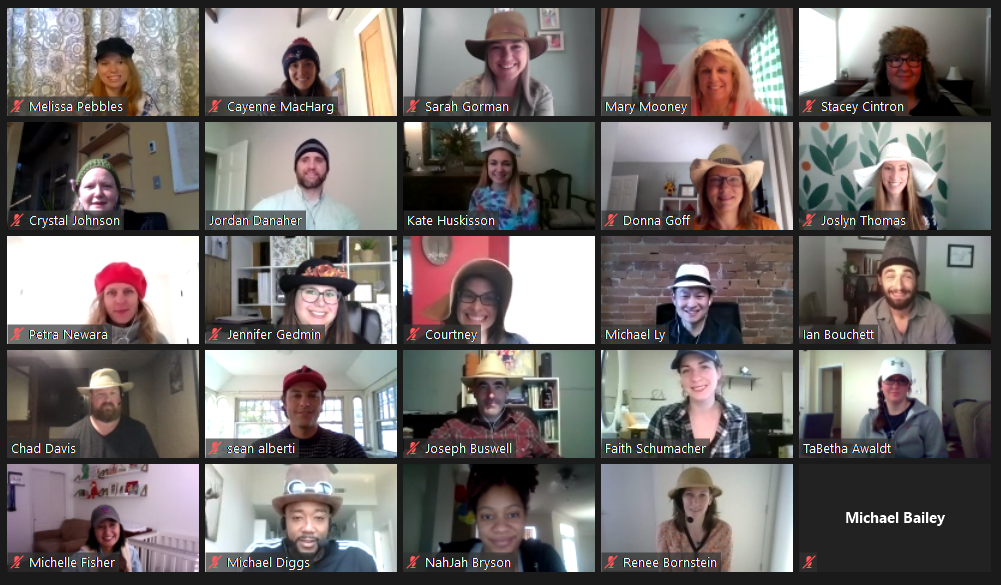This year, we weren’t able to get together in-person for a staff retreat, like we usually do.
We knew we still wanted to gather and share ideas, information, and connect staff members. So, we decided to host a virtual staff retreat! We know many of you might be in the same position, so we wanted to share the good, the bad, and the ugly about Reconciled’s virtual staff retreat.
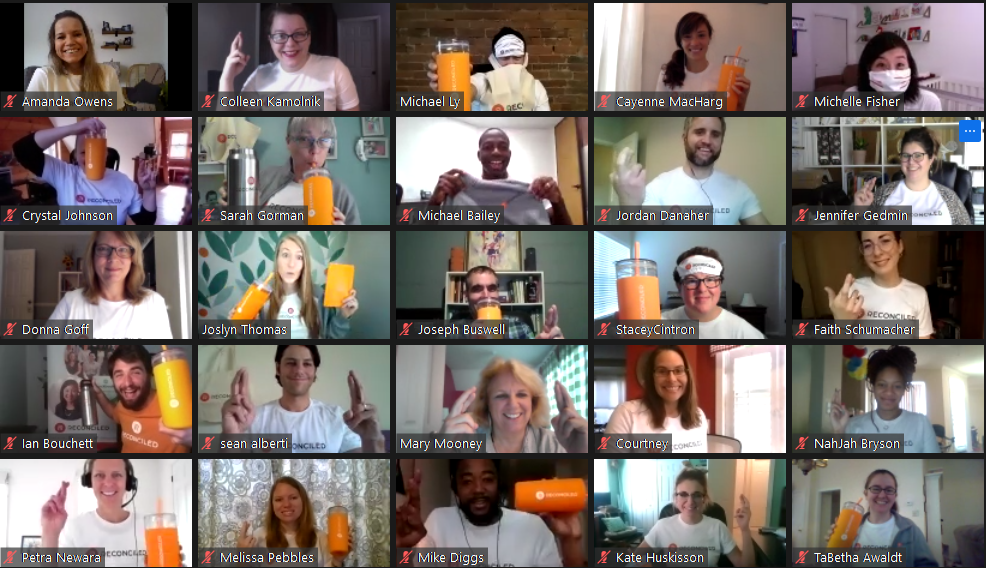
Format of the Retreat
First, we’ll start with the format that we chose. Over four days, we met from 11 am – 3 pm Eastern Time. We chose this time because we have employees in several time zones and this wasn’t too early or late for any of them. We broke the days up into morning sessions and afternoon sessions with breaks throughout and lunch around 1 pm Eastern. Zoom was utilized for the entire retreat and included breakout rooms for smaller groups and also had large all-staff gatherings.
To keep information about the retreat in one place, we created a Slack channel so staff could post photos, questions, and follow-up information from the sessions and discussions. On the Slack channel, we set the tone by setting expectations for everyone involved before the retreat started – what time to show up, what the daily theme was, the expectation to close browsers to avoid distractions and a broad overview of the schedule was given.
Topics Covered
While there were some fun and games, we also wanted the virtual staff retreat to be informational. Our team was lucky enough to have panel discussions with peers in our industry where we could ask questions about their growth struggles and how they overcame some of them. We included a DiSC workshop, so everyone knows what type of communicator they are, and what that means ( Measured Leadership ). It also helps us be aware of others we work with and adapt to their communication style as well. We dove into Networking and Professional Development ( Workplaceless ) in remote work – which can be hard! We also had a great speaker talk to our team about building a healthy relationship with stress ( NW Corporate Yoga ).
Fun Stuff We Did
Each day started with a different theme – wacky hats, office workspace photos, sunglasses, and Reconciled swag day! Before the virtual staff retreat, swag was shipped from SwagUp and boxed with some great Reconciled branded items – a t-shirt, water bottle, canvas tote bag, pen, and notebook. Starting out each day with a bit of lighthearted fun broke the ice and set the tone for the day. We took the time to get to know each other a little better with breakouts for games like Quiplash and Drawphone and trying to guess the staffer from their baby photos. Staff was also put into teams to try and complete a virtual escape room ( Moniker Partners ). It was challenging and fun!
What Our Team LOVED
After the retreat, our HR department sent out a survey to see how everyone liked the format and sessions. The most liked thing during our virtual staff retreat was the DiSC workshop. On a scale of 1 to 6 with one being the best, our staff gave this session a 1.9! After the DiSC, the Reconciled staff liked the Virtual Escape Room. The majority of our team was satisfied with how the event went (87%) and they felt more connected to the team and the company after the retreat was complete. Which is great for us, since that was the goal we set when we put it together. We also realized that a virtual event allows for some great speakers to present that would otherwise not be possible. It was well worth having specialists present to allow our team to enjoy the event and learn from the best.
“Loved the DiSC profiles and discussions. Feel it made me have some “ah-ha” moments.”
Improvements
Not everything went perfectly, but we expected that. Ahead of time, we reminded our team to embrace the awkwardness of technology and problems that come up with a virtual event. From the post-event survey, we found out that the team would have preferred three longer days vs. four shorter days. Also, longer breaks would have been nice – especially for lunch. We allowed 30-minute lunches, but it felt rushed and it was hard to eat and find time for a little break.
The team also found it hard to be staring at a computer screen for that amount of time. More breaks would have helped the zombie look that settled in towards the end of each day. In addition to the breaks to get away from the computer, our team wanted to see more break out rooms for an informal time to connect with each other. We had originally planned more time for this, but our scheduled 90-minute sessions ran long. If you’re planning a virtual staff retreat, plan longer time periods than you think you will need, especially for discussions and break-out rooms. Because of this time crunch, half of our team said the event felt a bit too rushed.
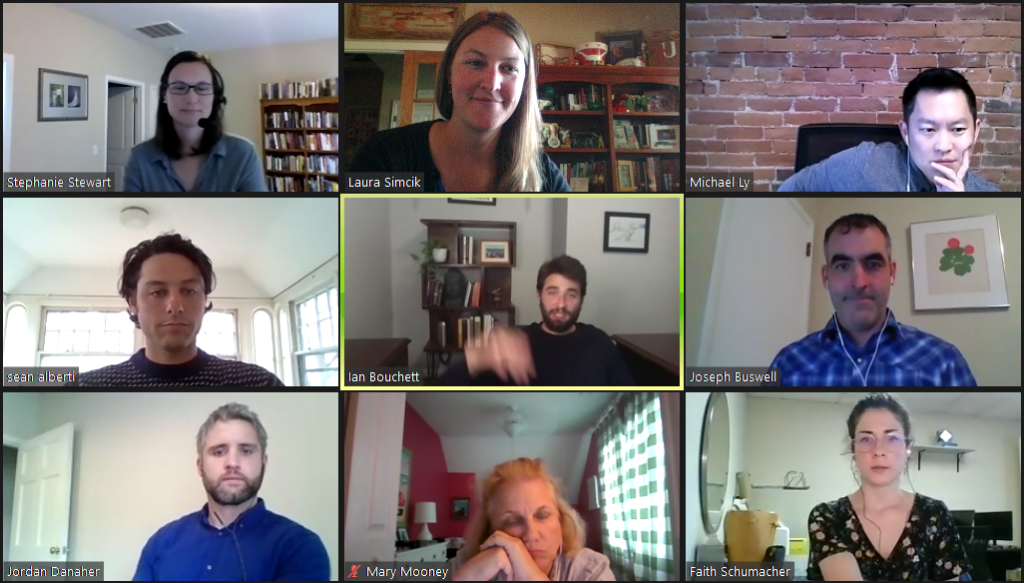
Overall, we loved that we were still able to get together, even if it was virtually. If you have any questions about our virtual staff retreat that we didn’t answer in the blog, reach out to us! Send an email to info@r econciled.com and we would be happy to answer your questions. If you’re interested in joining a team that prioritizes connecting in a remote environment, check out our career page . Also, if you’re a business owner in need of accounting help, contact us / sales@reconciled.com ! We’d be happy to help with all of your accounting needs for any sized business.
The post Reconciled’s Virtual Staff Retreat Recap appeared first on Reconciled.
Recent Posts
